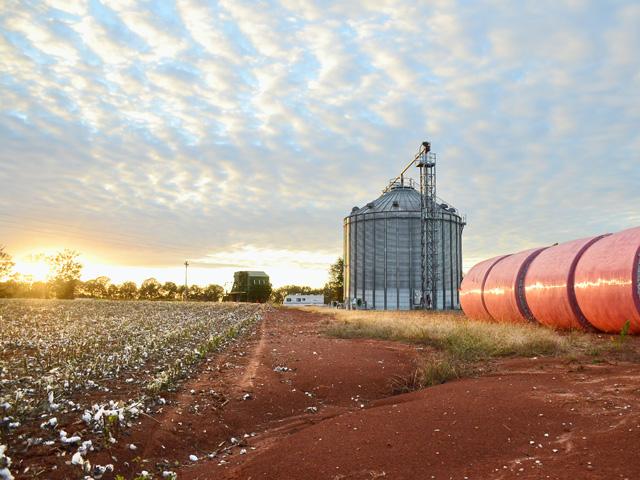Cottonseed Supplies Jump
Common Byproduct Cottonseed Comes With Cautions for Cattle
Cattle producers will find one common byproduct used by many in their feed rations in good supply through 2022. Cottonseed supplies are up by about 1 million tons this year after a 2021 season where the U.S. upland cotton crop increased 25%.
Jon Devine, senior economist for Cotton Incorporated, noted in reports from the organization that much of the increased supply came out of Texas, which received more moisture in 2021, boosting production.
The additional supplies of cottonseed will be a boost for both the dairy and beef industries. Cory Colburn, an independent dairy nutritionist, said that as a single feed ingredient, whole cottonseed provides a high level of energy, protein and fiber. It is commonly used in dairies to increase milk production and butterfat when added to lactating cow rations.
On the beef side, this is also a common feed, but producers used to dealing with the commodity know there are also management concerns, especially with regard to feeding bulls and young cattle.
Prices for the feedstuff based on the most recent report available are $305 per ton of whole cottonseed (FOB Memphis, bulk-rail-truck) and $300-$335 per ton for cottonseed meal (41% solvent).
GOSSYPOL TOXICITY
What is it about cottonseed that can negatively affect bull fertility and young animals? Within cottonseed there is a naturally occurring toxin, known as gossypol. Amounts of the compound vary widely by cotton variety and growing conditions. And in the case of cottonseed meal, the amount of gossypol may vary based on method used to produce the meal.
P[L1] D[0x0] M[300x250] OOP[F] ADUNIT[] T[]
Oklahoma State University Extension reported in 2017, for example, that the amount of toxic gossypol in cottonseed is reduced when the "screw-press method" with heat is used to produce meal. Today, the more common technique used is a "solvent extraction" method, which produces more oil. But because there is no heat used in this method, the amount of toxic gossypol in the meal can be 10 times higher.
NUTRITIONAL VALUES
Whole cottonseed is an excellent feedstuff, by the numbers. It averages 95% total digestible nutrients (TDN), 24% crude protein (CP) and 20% fat.
FEEDING RECOMMENDATIONS
Most recommendations set feeding limits on whole cottonseed at 20% of total daily intake (no more than 6 pounds per day). It is recommended not to feed whole cottonseed to calves under 400 pounds. As for bulls, most producers don't want to risk a drop in fertility, which, in rare cases, has been linked to consumption of cottonseed. If they feed cottonseed, it is only during post-breeding season and in limited amounts.
In feeding cottonseed, it is important to differentiate between whole cottonseed and meal. Nutritional values are different, and as noted earlier, the method of milling can alter gossypol levels. CP levels for whole cottonseed, for example, average 24%; for cottonseed meal, they are 46%. Compare that to corn, with a CP at 9.8%. TDN on whole cottonseed is 90%, on cottonseed meal it is 75%. Corn is 90%. Lastly, crude fat on whole cottonseed is high at 22%; for cottonseed meal, it is 3%. For corn, that level is 4%.
FUTURE FOR ULTRA-LOW-GOSSYPOL COTTONSEED
Advances continue in the area of ultra-low-gossypol cottonseed (ULGCS), that can be used for both animal and human consumption. In 2019, Texas A&M researchers saw the culmination of 25 years of research in the area, with FDA approval of an ULGSC. This is a transgenic cotton variety, developed at A&M's Institute for Plant Genomics and Biotechnology at College Station, by plant biotechnologist Keerti Rathore.
If ULGCS were adopted by cotton growers worldwide, it could significantly affect nutrition-security, said Rathore. He explained that the amount of protein locked in the annual global output of cottonseed is about 10.8 trillion grams. "That is more than what is present in all the chicken eggs produced globally and enough to meet the basic protein requirements of over 500 million people," he said. The seed could be roasted, used to make meal, flower and oil.
Kater Hake, vice president of agricultural and environmental research for Cotton Incorporated, told DTN that approval of ULGCS was a big milestone for food and feed. At this point, however, he said no commercial company has decided to pick it up and run with it.
"There are not commercially available supplies of ultra-low-gossypol cottonseed available at this time," he said. "At this point, to my knowledge, all commercially grown cottonseed in the U.S. does not have any trait to alter gossypol content. It [gossypol level] does vary by variety, but there is no biotech trait to lower it that has been adopted."
Hake hopes to see that change in the years to come. He added that both USDA and the FDA have approved the trait and that, moving forward, this will enable cultivation and use of the ULGCS. The research was supported with funds from Cotton Incorporated and Texas' AgriLife Research.
Victoria Myers can be reached at vicki.myers@dtn.com
Follow her on Twitter @myersPF
(c) Copyright 2022 DTN, LLC. All rights reserved.






